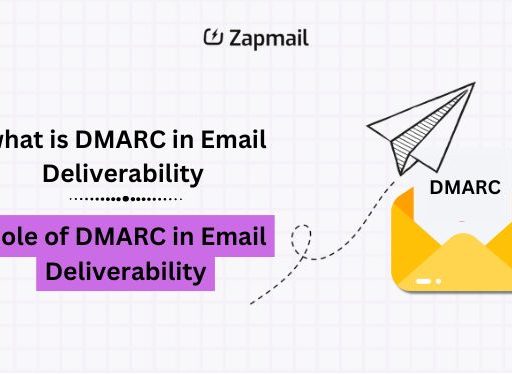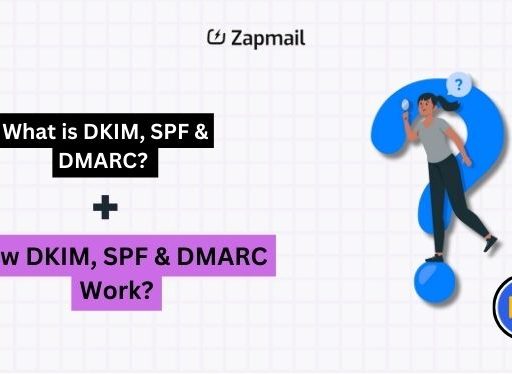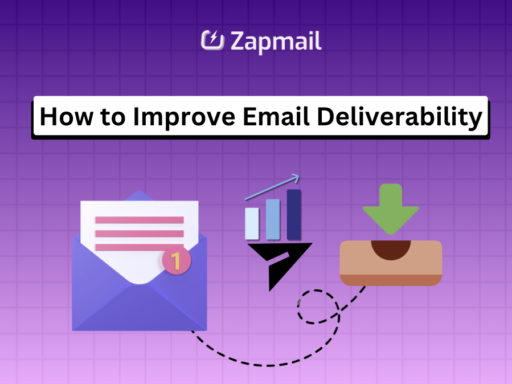Cold email outreach is key for businesses to find new clients5. Cold emailing is a big part of this. SPF, or Sender Policy Framework, is crucial for cold email success. It makes email marketing secure and boosts email security.
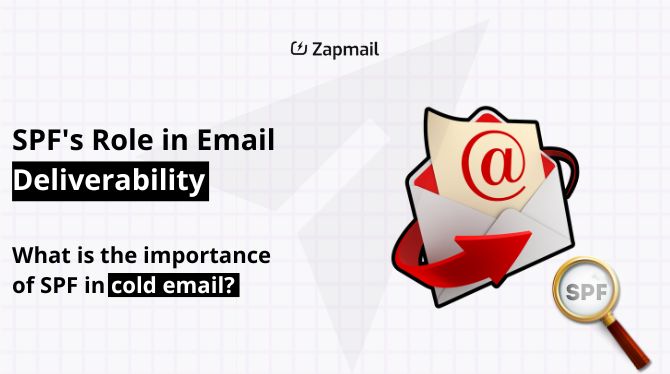
SPF checks if emails come from approved servers. This fights against email scams and phishing. It’s especially important now because email threats have gone up a lot since COVID-19.
A good SPF record shows you’re real and trustworthy. This can make your business look better and your emails more reliable. SPF is a must for keeping your emails out of spam folders.
Key Takeaways
- Implementing SPF legitimizes your emails as a trusted source, essential for email security.
- Properly configured SPF records are critical for a brand’s image and cold email success.
- SPF is an effective shield against email spoofing and phishing—a boon for secure email marketing.
- SPF and DKIM, when used together, form the bedrock of a solid email deliverability framework.
- Regular maintenance and correct SPF setup are crucial to prevent legitimate emails from being mislabeled as spam.
- Understanding and rectifying common SPF validation errors can markedly improve your email deliverability rates.
- Adherence to SPF, DKIM, and DMARC protocols is necessary for comprehensive email security and deliverability.
Understanding SPF and Its Significance in Cold Emailing
Sender Policy Framework (SPF) is key in email deliverability, especially for cold emailing. SPF records are DNS text records that show which mail servers can send emails for your domain. This stops email spoofing, making sure your emails are seen as real by recipient servers.
SPF lets you list IP addresses that can send emails from your domain. When an email is sent, the recipient checks if it’s from an allowed server. This is important for cold emailing, where being seen as legitimate is crucial for success.
- Establishing Trust: Using SPF records makes your emails more trustworthy. This is key in cold emailing, where a good first impression can make a big difference.
- Improving Email Deliverability: A good SPF setup helps your domain’s reputation, leading to better email delivery. This means your emails are less likely to be marked as spam and more likely to reach your prospects’ inboxes.
- Preventing Email Spoofing: SPF records clearly state which email servers can use your domain. This greatly reduces the risk of your domain being used for bad purposes. It protects your brand and keeps your communications safe.
Good SPF records improve email deliverability. This means including all allowed sending IPs and keeping configurations up to date. In cold emailing, where getting people to engage is key, strong SPF records help improve your email interactions and campaign success. By authenticating your emails, you create stronger, more effective communication channels in your marketing.
Implementing and keeping SPF records is more than just following technical rules. It’s about creating a reliable and trustworthy digital identity in cold emailing. When potential customers see your domain is protected against spoofing, your messages become more believable. This boosts both engagement and response rates.
What is SPF?
SPF is a security tool for email senders. It lists which IP addresses can send emails on their behalf. This helps keep emails out of spam filters and ensures they’re seen as real.
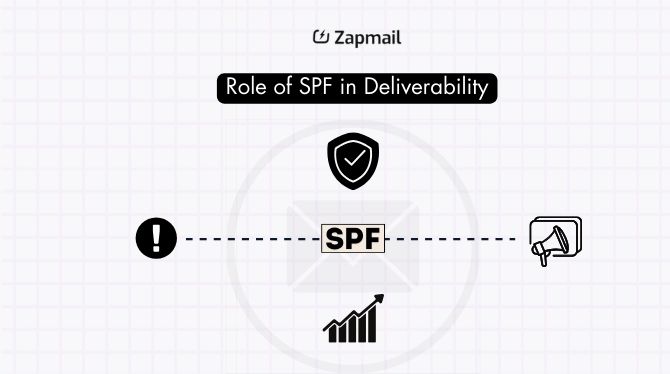
Role of SPF in Deliverability
SPF records are key in email deliverability. They help verify who sends emails and boost sender reputation. This is crucial for reliable email sending.
- Boosting Trust with SPF Verification – SPF records build trust with ESPs and email users. They show that emails come from approved servers. This improves sender reputation and email delivery.
- Branding and Reputation Management – SPF protects brand integrity by verifying emails. It reduces risks from spoofing and phishing. This strengthens a brand’s reputation and digital identity.
- Preventing Email Fraud – SPF stops email fraud by limiting fake emails. It prevents phishing scams and other cybercrimes. Keeping SPF records up-to-date is essential for security.
- SPF as a Spam Filter Evasion Technique – SPF helps emails avoid spam filters. It shows emails are sent from trusted servers. Using SPF with DKIM and DMARC boosts email delivery and security.
How SPF Enhances Email Authentication
Sender Policy Framework (SPF) is a key part of email authentication protocols. It makes secure email outreach more secure and reliable. It checks if emails come from authorized mail servers listed in the domain’s SPF record.
SPF is important for email security and getting emails delivered. Here are some key points:
- Email Server Verification: SPF lets the recipient’s server check if the sender’s IP address is in the SPF record. This keeps the email source safe.
- Reduction in Email Spoofing: SPF stops fake emails by checking who sent them. This lowers the risk of phishing attacks, making emails safer.
- Improved Email Deliverability: Emails from authorized mail servers are more likely to reach the inbox. This makes secure email outreach more effective.
- Complements Other Protocols: SPF works well with other security standards like DKIM and DMARC. Together, they make your domain’s security stronger.
Adding SPF to your domain’s settings boosts security and builds trust with email recipients. It’s essential for keeping professional relationships strong and communication smooth. SPF also helps your email delivery meet industry standards, giving you an edge online.
In short, SPF records are a big step up for email authenticity. They are a key solution in the fight to keep email communications safe in today’s digital world. Companies looking to improve their email delivery should definitely use SPF.
Pitfalls and Common Misconceptions About SPF
The Sender Policy Framework (SPF) is essential for email security, but it’s not a complete solution. SPF only verifies if the sending email server is authorized but doesn’t protect the sender’s email address itself or ensure the email content is safe.
Overly strict SPF policies can lead to good emails being blocked, so maintaining a balanced approach and keeping records updated is crucial. Additionally, SPF should cover both sending domains and domains used in the HELO command, though not having SPF doesn’t necessarily hurt deliverability, contrary to popular belief.
SPF works best in combination with DKIM and DMARC for enhanced protection, and regular checks for validation errors—like incorrect characters or formatting—help avoid email bounce backs, especially in services like Gmail or Office 365. Keep SPF records concise to avoid DNS issues and prevent DoS attacks.
FAQ
SPF is key in email deliverability. It checks if emails from a domain come from an approved mail server. This helps build trust with Email Service Providers (ESPs). It keeps emails out of spam folders and into the inbox, which is crucial for cold email campaigns.
SPF boosts cold emailing success by building trust with the recipient. It reduces spam filtering. This makes a brand’s reputation stronger, increasing the chance cold emails will be opened.
SPF stands for Sender Policy Framework. It’s a security tool against email spoofing. Domain owners list which email servers are allowed to send emails on their behalf. This is done through a DNS record that checks if the sender is genuine, improving email security.
SPF records are vital for branding and reputation. They ensure emails are from the stated domain and brand. This protects the brand’s integrity and keeps marketing communications trustworthy.
SPF prevents email fraud by controlling who can send emails from a domain. It limits phishing and spoofing attacks. This ensures only authorized senders can email, keeping the domain secure.
Many think SPF can fully stop spam or spoofing. It’s also believed to replace other email authentication methods like DKIM or DMARC. But SPF works best when used with other methods.
SPF validation errors often come from wrong domain formatting, DNS lookup limits, or using invalid macros. It’s crucial to ensure SPF records are correct and updated to keep email deliverability high.
